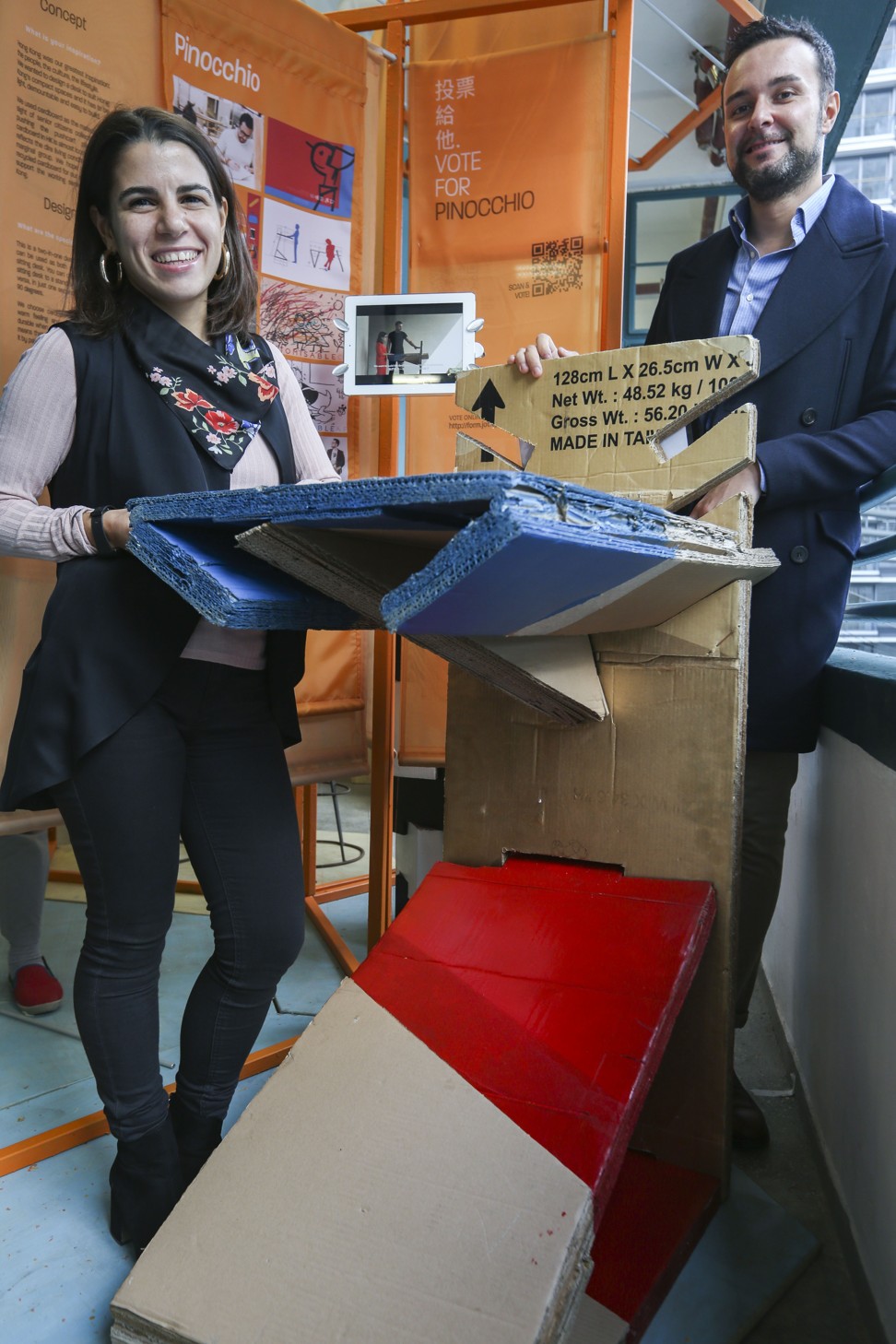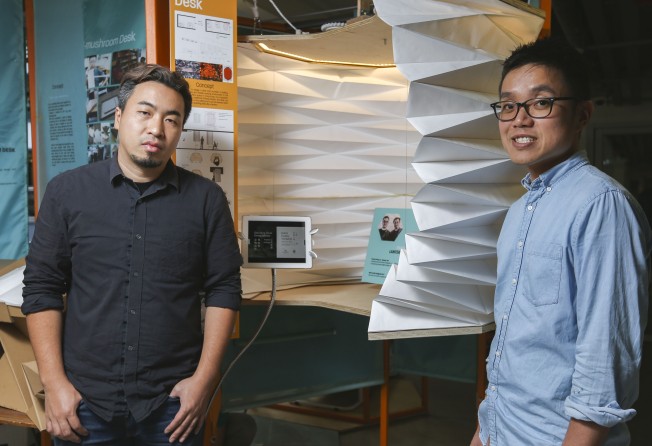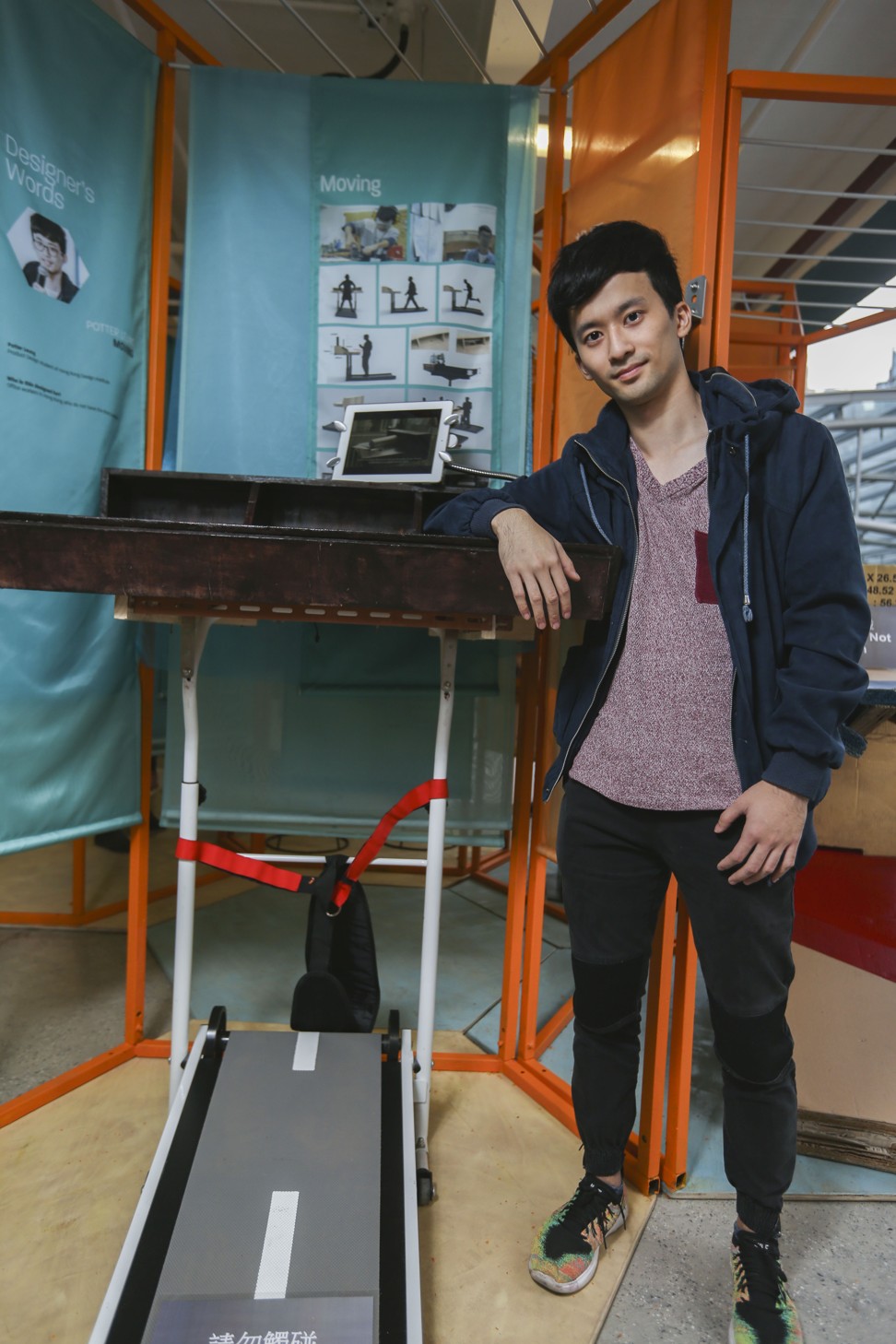
Best standing desk competition: Hong Kong designers, students compete to make best prototype
The Standing Desk Designathon at PMQ showcases the best designs for Hong Kong’s cramped spaces that allow office workers to avoid long periods of inactivity. Students, designers and hobbyists demonstrated their designs

“We have heard that sitting is the new smoking,” says Cris O’Brien, co-founder of the Keep Moving Project, a non-profit that promotes health and wellness. He is referring to work by the Mayo Clinic’s James Levine, who has attributed extended periods of sitting to obesity, high blood pressure and abnormal levels of cholesterol. It turns out it isn’t just the smoke breaks that are killing you; it’s everything in between.
O’Brien is being provocative, but he isn’t trying to thrust guilt on office workers. He is speaking to a group of young designers, hobbyists and design students who are taking part in the Standing Desk Designathon, a design competition held in collaboration with local group MakerBay. “We want to show people ways to add more activity in their lives without making drastic changes,” he says.
He thinks standing desks will do just that. There are plenty of stylish examples on the market, such as the height-adjustable smart desks designed by Yves Béhar for Herman Miller, which remind users when they’ve been sitting for too long, or Vitra’s flat-pack Hack desk by Konstantin Grcic, which can be used for sitting, standing – or as a sofa.

Along the way, they worked with experts like Eric Yim, founder of Posh Office Systems, who gave them practical design advice. They visited social services organisation SoCO to understand the needs of children who live in tiny subdivided flats. And they heard from physiotherapist Kieran Rogers, who stressed the need to avoid staying in the same position for extended periods of time.
“Standing only is just as bad as sitting only,” he says. Standing for long periods of time can strain the muscles and it doesn’t do anything to get blood flowing. “I’m looking for systems that can promote movement.”
The prototypes are unveiled at PMQ in Central.
One by one, each of the 15 teams brings out desks and gives their pitch. Apple Mandap, a student at the Raffles Design Institute, wheels out a cupboard with three retractable platforms at different heights. The entire piece is modular – the top half can be removed to create a bench for sitting – and multiple people can use it at once. It occupies only a little more space than a small bookshelf, making it suitable even for the smallest Hong Kong flat.
Standing only is just as bad as sitting only
“It’s a great design!” exclaims posture specialist Chris Watts.
“All you need is a cushion [for the bench],” says design entrepreneur Cindy Kan.
A couple of hours later, the judges whittle the 15 teams to five semi-finalists. (Mandap’s desk wins a prize for most kid-friendly, although it doesn’t make the semi-finals.) The desks are now part of a roving exhibition that will be displayed in Central, Sheung Wan and Tseung Kwan O.

We wanted a desk that could go on adventures
“I’ve been using it for over a year, no problem,” says Lau. He says he built his first desk topper five years ago, and two years ago a YouTube video taught him an elegant way to fold the cardboard, making it more stable and attractive.
Cardboard is in the design of another semi-finalist, the Pinocchio desk from architects Tommaso Panerai and Francisca Teixeira. In a nod of respect towards the many elderly people forced to scavenge cardboard for a living, “we used second-hand cardboard from the streets,” says Panerai.
The sheets were then pressed together into panels that can be slotted into different heights on a vertical frame. (Teixeria is 150cm tall while Panerai is 190cm – a broad enough range for testing.) The structure can be flipped over to use as a sitting desk, and it can be easily packed away and transported. “We wanted a desk that could go on adventures,” says Teixeria.

The most striking design is the Lantern Desk, which was met with an excited gasp during the pitch meeting. Designers Francis Wong Chi-ming and Sammy Yee Kin-hang envisaged a Chinese paper lantern that could fold down from the ceiling, creating a capsule-like work space that doesn’t take up any floor area. “We had to make everything ourselves,” says Wong, which included 3D-printing the motor gears that allow the desk to extend and retract.
The public can vote on their favourite design during the roving desk exhibition, which continues until December 22. “We’re going to do everything in our power to put the winner into production,” says O’Brien, with proceeds going to support people who can’t afford desks of their own. At the very least, he hopes that seeing such a broad range of desks will encourage people to get moving.
The Standing Desk Designathon exhibition is at Nan Fung Tower, 88 Connaught Road, Central, until December 14, then moves to Tseung Kwan O Plaza